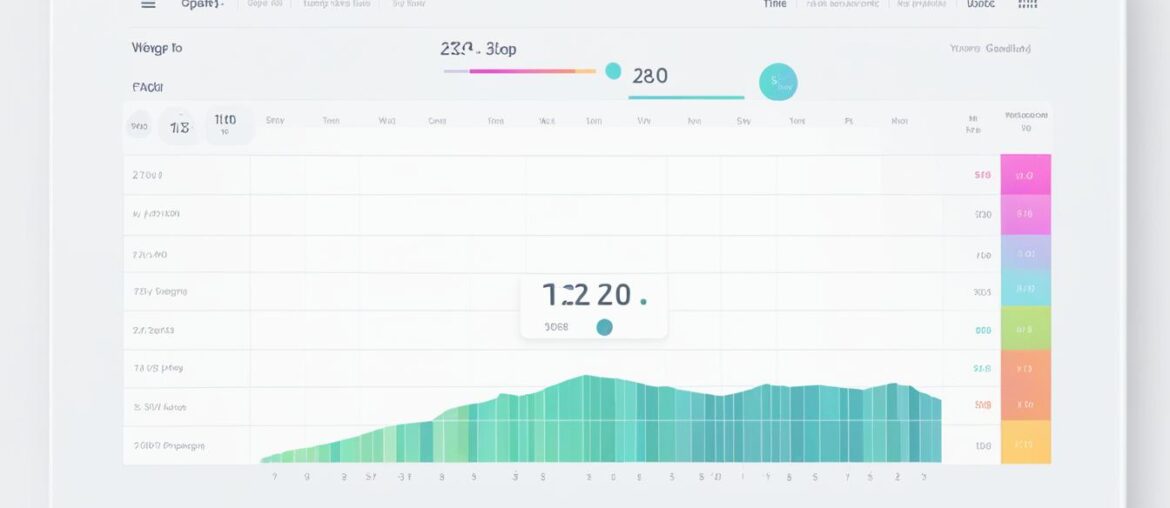When it comes to setting up a weight loss challenge, fairness and accuracy are key (check this post out). To ensure a level playing field for participants of different body shapes, sizes, heights, and weights, the best way to calculate weight loss challenge success is by using percentage body fat lost or percentage body weight lost. By focusing on these metrics, you can accurately track progress and determine the winners.
To start, establish specific weigh-in times and provide a schedule for participants to follow. This allows for consistency and ensures that everyone is held accountable. Additionally, use consistent measurement tools, such as a weight loss challenge calculator or tracker, to track progress effectively. Recording baseline measurements is crucial for comparison and reassessing progress on a weekly basis will keep participants motivated.
Creating a supportive environment is also essential for the success of the weight loss challenge. Consider establishing separate groups for men and women to account for physiological differences. Provide incentives and prizes to keep participants motivated throughout the challenge. Emphasize individual success alongside friendly competition to encourage a supportive and collaborative atmosphere.
It’s important to have a plan in place to address cheating and ensure the integrity of the challenge. Clearly communicate the weight loss challenge guidelines and rules to participants. By taking these steps, you can create a fair and motivating weight loss challenge that will yield successful results.
Key Takeaways:
- Calculating weight loss challenge success based on percentage body fat lost or percentage body weight lost ensures fairness.
- Establish specific weigh-in times and provide a schedule for participants.
- Use consistent measurement tools, like a weight loss challenge calculator or tracker, for accurate progress tracking.
- Create a supportive environment by providing incentives and prizes.
- Address cheating and establish clear guidelines and rules for the challenge’s integrity.
Setting Up a Fair and Motivating Weight Loss Challenge
When organizing a weight loss challenge, it is essential to create an environment that is fair and motivating for all participants. Here are some tips on how to set up a successful weight loss challenge:
- Specify Dates and Time Frames: Setting specific start and end dates, along with a defined time frame, ranging from 6 to 12 weeks, provides structure and helps participants stay focused on their goals.
- Realistic Expectations: Emphasize the importance of health over weight and encourage participants to set realistic goals that align with their individual capabilities and circumstances. This approach promotes sustainable, long-term lifestyle changes rather than quick fixes.
- Communicate Measurement Success: Clearly communicate how success will be measured in the challenge, whether it’s based on pounds lost or percentage of body fat. This ensures transparency and consistency among participants.
- Individual or Team Participation: Consider offering both individual and team participation options to accommodate different preferences and promote camaraderie.
- Entry Fees: Implementing entry fees with affordable amounts can help fund prizes and cover administrative expenses. Ensure that the fees are reasonable and manageable for all participants.
- Winner’s Rewards: Determine the rewards for the challenge winners, such as cash prizes, gift cards, or fitness-related items. These incentives add excitement and motivation to the competition.
- Authorization: If organizing a weight loss challenge within a workplace, be sure to obtain proper authorization from relevant parties to ensure compliance with company policies and regulations.
By following these guidelines, participants will have a fair and motivating weight loss challenge experience. The emphasis on realistic goals, clear communication, and inclusive participation will maximize motivation and ultimately lead to successful outcomes.
Weight Loss Challenge Guidelines
| Guidelines | Description |
|---|---|
| Specify Dates and Time Frames | Set clear start and end dates for the challenge, and establish an appropriate duration, typically between 6 to 12 weeks. |
| Realistic Expectations | Encourage participants to set achievable and sustainable goals that prioritize overall health and well-being. |
| Measurement Success | Clearly communicate how success will be measured, whether by pounds lost or percentage of body fat. |
| Individual or Team Participation | Offer options for participants to join as individuals or form teams, fostering a sense of camaraderie and support. |
| Entry Fees | Implement reasonable entry fees to cover administrative costs and provide funds for prizes or incentives. |
| Winner’s Rewards | Determine the rewards or prizes for the challenge winners, creating additional motivation and excitement. |
| Authorization | Obtain proper authorization, especially in a workplace setting, to ensure compliance with company policies and guidelines. |
Setting up a weight loss challenge with fairness and motivation in mind will not only encourage participation but also increase the chances of achieving positive and sustainable results.
Motivating Participants and Creating a Supportive Environment

A successful weight loss challenge requires active and engaged participants. To motivate them, emphasize health over weight loss and involve additional incentives such as donations to charity. Offering educational opportunities, such as seminars from health and wellness professionals, cooking demonstrations, or partnerships with personal trainers and gyms, can further support participants in achieving their goals.
Creating clear contest guidelines, outlining weigh-in and measurement procedures, and establishing a firm start date are crucial. It’s also important to communicate all policies and procedures, including prohibited activities, and obtain authorization, especially in a workplace setting.
Measuring Weight Loss Progress and Determining Winners
When it comes to a weight loss challenge, accurately measuring progress is crucial. There are several options for tracking progress, including:
- Weight Loss Measurement: Tracking the pounds lost by each participant.
- Body Fat Percentage Measurement: Calculating the percentage of body fat lost by each participant.
- Weight Loss as a Percentage of Body Weight: Determining weight loss as a percentage of initial body weight.
Depending on the starting points of the participants, calculating weight loss as a percentage of body weight may provide a fair comparison. This accounts for differences in body size and starting weight, creating a level playing field for all participants.
To ensure accurate measurements, it’s essential to establish clear guidelines:
- Participants should record their measurements using consistent measurement tools.
- Measurements should be taken at the same time each week for consistency.
Sample Weight Loss Challenge Measurement Table
Tracking and recording measurements is essential throughout the weight loss challenge. Here’s an example of a measurement table:
| Participant Name | Starting Weight (lbs) | Current Weight (lbs) | Pounds Lost | Weight Loss % |
|---|---|---|---|---|
| John Smith | 200 | 190 | 10 | 5% |
| Jane Johnson | 180 | 170 | 10 | 5.56% |
| Michael Brown | 220 | 200 | 20 | 9.09% |
The participant with the highest weight loss percentage or the most pounds lost can be determined as the winner(s) of the weight loss challenge. It’s important to decide on the criteria for determining the winners and the prizes or rewards to be awarded.
Creating a fair measurement system and determining winners based on tracked progress will motivate participants to stay committed, pushing them towards achieving their weight loss goals.
Conclusion
In conclusion, the key to a successful weight loss challenge lies in the accurate calculation of progress and the establishment of a fair and motivating environment. By focusing on percentage body fat lost or percentage body weight lost, participants of varying starting points can compete on an equal playing field. This ensures that the challenge measures overall health improvement rather than simply the number on the scale.
Following the guidelines for setting up a weight loss challenge, including clear rules and regular weigh-ins, provides structure and fairness for all participants. Recruiting individuals through incentives and educational opportunities fosters an engaged and motivated community striving towards shared goals. By creating a supportive environment, participants can rely on each other for encouragement and accountability throughout the challenge.
Accurate measurement of weight loss progress is essential to determine the winners of the challenge. Whether tracking pounds lost, body fat percentage, or weight loss as a percentage of body weight, consistency is key. By adhering to a standard measurement method and recording results at regular intervals, participants’ progress can be accurately assessed and winners can be rightfully recognized.
Ultimately, a weight loss challenge is not only about achieving short-term goals but also about adopting healthy and sustainable habits for long-term success. By following these guidelines, participants can make meaningful progress towards their weight loss goals and experience both physical and mental transformations.




